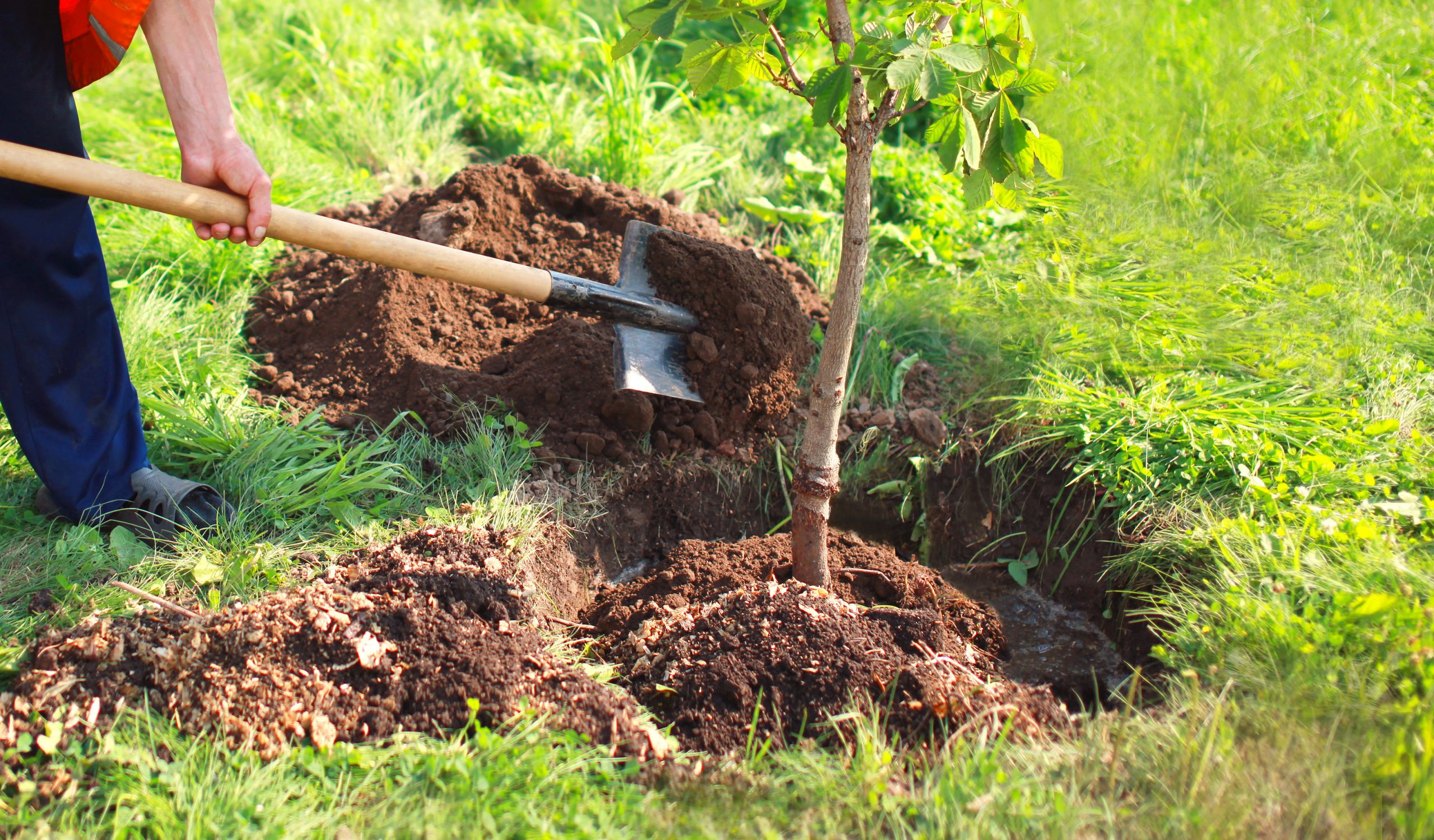
Planting Trees
Tips for planting trees
Trees are a vital part of our ecosystem and provide many benefits, including improving air quality, stabilizing soils, and providing habitat for wildlife. While planting trees may seem like a daunting task, with a little planning it can be a fun and rewarding experience. Here are a few tips to get you started:
* Select the right tree for the right location. Be sure to consider the mature height and spread of the tree, as well as its light and water requirements.
* Prepare the planting hole before you bring the tree home. The hole should be twice as wide as the root ball and just deep enough so that the tree is at the same level it was in the nursery.
* Gently remove the tree from the container or ball and place it in the planting hole. Be careful not to damage the roots.
* Fill in the planting hole with soil, being careful not to bury the trunk of the tree. Water the tree thoroughly. With a little care and attention, your new tree will soon be a welcome addition to your home and community.
Content:
- Look for the right tree for your climate and soil.
- Know how big the tree will grow and choose a location accordingly.
- Dig a hole twice as wide as the tree's root ball.
- Gently remove the tree from its container.
- Position the tree in the hole so that the root flare is level with the ground.
- Backfill the hole and water thoroughly.
- Mulch around the tree to help with moisture retention.
1. Look for the right tree for your climate and soil.
There are a few things to consider when choosing a tree to plant. First, you'll need to find a tree that is native to your area or will thrive in your climate. Not all trees are alike and some will require specific conditions to prosper. Second, you'll need to assess the soil in your yard. Different trees prefer different types of soil, so it's important to find one that will be compatible with what you have. Once you've taken these things into consideration, you'll be able to narrow down your options and choose the best tree for your needs.
In general, deciduous trees are a good option for most climates. They are adaptable and can tolerate a wide range of conditions. They also tend to be relatively low maintenance, which is ideal if you don't want to put a lot of time and effort into caring for your tree. Some popular deciduous trees include oak, maple, and elm.
If you live in an area with cold winters, you'll want to choose a tree that is tolerant of freezing temperatures. Some good options include birch, fir, and spruce. The type of soil in your yard is also an important consideration. Some trees prefer acidic soil while others prefer alkaline. You'll need to test your soil to find out which type it is. You can usually find pH test kits at your local hardware store. Once you know the pH of your soil, you'll be able to choose a tree that is compatible with it.
When you're ready to plant your tree, be sure to choose a spot that gets plenty of sunlight. Most trees need at least six hours of sunlight per day to thrive. You'll also want to make sure the spot you select is large enough to accommodate the tree's root system. Once you've found the perfect spot, follow the instructions that came with your tree to plant it properly. water it regularly and give it time to grow. With a little patience and care, you'll soon have a beautiful, healthy tree to enjoy for years to come.
2. Know how big the tree will grow and choose a location accordingly.
When you are choosing a location to plant a tree, it is important to take into account how big the tree will eventually grow. If you plant a tree that will grow to be 30 feet tall in a spot that is only 10 feet wide, it is likely to cause problems down the road. The roots of the tree will grow outward and may damage sidewalks, driveways, or foundations. They may also cause problems for underground utility lines. It is best to choose a location that is at least twice as wide as the mature tree will be tall. This will give the tree enough room to grow without causing problems. It may also be a good idea to consult with a professional before planting a tree in a close proximity to your home or business.
3. Dig a hole twice as wide as the tree's root ball.
When you're ready to plant your tree, one of the most important things to do is to make sure you dig a hole that's twice as wide as the tree's root ball. This will give your tree the room it needs to spread its roots out and really take hold in the ground. You also want to make sure that the hole is deep enough so that the root ball is level with the ground. If it's not, your tree may not get the proper amount of water and could end up dying.
4. Gently remove the tree from its container.
If you're like most people, you probably have a few containers of trees around your house. Maybe you have a few potted plants, or a couple of small trees in pots. Whatever the case may be, at some point you're going to need to remove the tree from its container. The first thing you need to do is gently loosen the tree from the container. You can do this by hand, or with a small shovel or spade. Once the tree is loosened, you can carefully lift it out of the container. Once the tree is out of the container, you need to find a suitable location for it.
If you're planting it in your yard, make sure to dig a hole that's big enough for the tree's root ball. Once you've found a suitable location, you can gently lower the tree into the hole. Once the tree is in the hole, you need to backfill the hole with soil. Make sure to pack the soil firmly around the tree's roots. Once the hole is filled, you can give the tree a good watering. Now that the tree is planted, it's important to give it the proper care. Make sure to water it regularly, and fertilize it as needed. With a little bit of care, your tree will thrive and grow for many years to come.
5. Position the tree in the hole so that the root flare is level with the ground.
When you're ready to plant your tree, it's important to make sure that you position it in the hole correctly. The root flare—the point where the roots begin to flare out from the trunk—should be level with the ground. If the root flare is too high or too low, it can affect the tree's ability to post and ultimately lead to its death. Here are a few tips to help you get the positioning right:
- Use a shovel or your hands to dig a hole that's a little bit wider and deeper than the tree's root ball.
- Carefully lower the tree into the hole so that the root flare is level with the ground. If the root flare is too high, you can add or remove soil from under the tree to adjust the height.
- Once the tree is in position, backfill the hole with soil and water it well.
- If you're planting more than one tree, be sure to space them out properly so that they have enough room to grow.
Following these tips will help ensure that your tree is properly positioned and has the best chance of surviving and thriving.
6. Backfill the hole and water thoroughly.
Backfilling is the process of returning the excavated soil back into the hole around the tree. This step is important because it helps support the tree and prevents it from tipping over. Begin by lightly filling the hole with soil and then packing it down with your foot or a shovel. Continue backfilling until the hole is about 3/4 full. Then, water the soil around the tree thoroughly.
7. Mulch around the tree to help with moisture retention.
It's important to mulch around trees to help with moisture retention since tree roots need a consistent supply of water. There are a few things to keep in mind when mulching:
- The type of mulch you use should be based on the needs of the tree. For example, cedar mulch is good for acid-loving trees, while pine mulch is good for general use.
- The depth of the mulch should be no more than 2-3 inches.
- The mulch should be placed in a donut shape around the tree, with the hole in the center being the size of the tree's trunk.
Mulching is an important part of tree care, and by following these tips, you can ensure that your tree gets the moisture it needs to stay healthy and thrive.
When it comes to planting trees, there are a few things you need to keep in mind. First, make sure you choose the right tree for the right spot. Secondly, don't forget to dig a hole that is twice the size of the tree's root ball. And finally, water your tree regularly, especially during the first year. By following these simple tips, you'll be sure to have a happy, healthy tree in no time!

